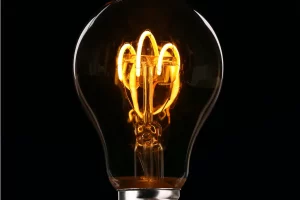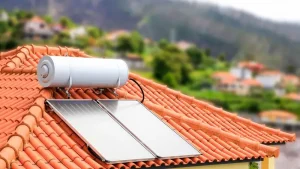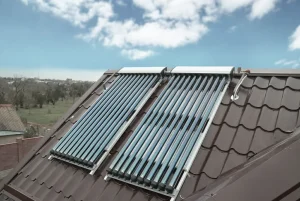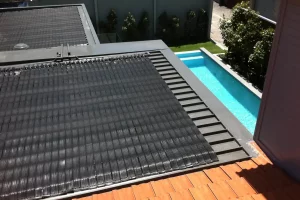As the demand for sustainable and cost-effective energy solutions grows, active solar water heating systems have become a popular choice among homeowners. Among these, indirect circulation systems are particularly advantageous, especially in regions with diverse climates. This article explores the workings of indirect circulation systems, their ideal applications, benefits, drawbacks, and alternatives, offering a thorough guide for homeowners considering this technology.
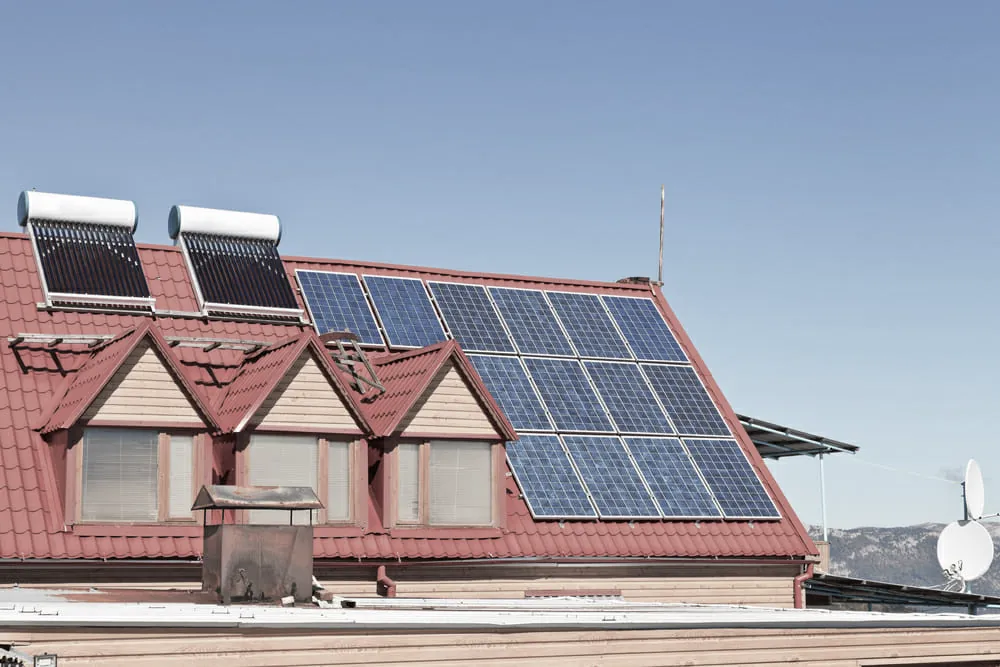
How Indirect Circulation Systems Work
Indirect circulation systems, also known as closed-loop systems, use a heat-transfer fluid to collect and transfer solar energy to household water. This fluid is usually a mix of water and antifreeze, which prevents freezing and allows the system to function efficiently in colder climates. Here’s a detailed breakdown of the process:
- Solar Collectors: These are typically mounted on the roof or another sunny location. They absorb solar energy and transfer it to the heat-transfer fluid circulating through them.
- Pump: A pump circulates the heat-transfer fluid from the storage tank through the collectors and back to the tank. This circulation is controlled by a differential controller, which activates the pump when the temperature in the collectors is higher than the temperature in the storage tank.
- Heat Exchanger: Located inside the storage tank, the heat exchanger transfers heat from the circulating fluid to the household water without mixing the two fluids.
- Storage Tank: The heated household water is stored in a tank, ready for use in various domestic activities such as bathing, washing, and cooking.
When Indirect Circulation Systems are a Good Solution
Indirect circulation systems are versatile and suitable for a range of environments, especially where freezing temperatures are common. Here are some scenarios where they are particularly beneficial:
- Cold Climates: These systems are ideal for regions with cold winters, as the antifreeze in the heat-transfer fluid prevents the system from freezing.
- Seasonal Variability: In areas with significant temperature variations, indirect systems provide consistent performance year-round.
- High Hot Water Demand: Homes with substantial hot water needs can benefit from the efficiency and reliability of these systems, ensuring a steady supply of hot water.
Advantages of Indirect Circulation Systems
- Freeze Protection: The use of antifreeze in the heat-transfer fluid allows these systems to operate effectively even in freezing temperatures, preventing damage to the collectors and pipes.
- Versatility: Suitable for a wide range of climates, indirect systems can handle both hot and cold conditions, making them more versatile than direct circulation systems.
- Longevity: By keeping the household water separate from the collectors, these systems reduce the risk of scaling and corrosion, extending the lifespan of the system.
- Efficient Heat Transfer: The heat exchanger ensures efficient transfer of solar energy to the household water, optimizing the system’s performance.
Disadvantages of Indirect Circulation Systems
- Higher Initial Cost: Indirect systems are generally more complex and expensive to install compared to direct circulation systems, due to additional components like heat exchangers and antifreeze.
- Maintenance: The need to periodically check and replace the antifreeze solution adds to the maintenance requirements of these systems.
- Potential for Heat Loss: Heat exchangers can introduce some level of heat loss, reducing overall system efficiency compared to direct circulation systems.
Alternatives to Indirect Circulation Systems
For homeowners where indirect circulation systems may not be the best fit, there are several alternatives:
- Direct Circulation Systems: These systems circulate household water directly through the collectors. They are simpler and less expensive but are suitable only for regions with mild, non-freezing climates.
- Drainback Systems: These systems drain the water from the collectors and pipes when the pump is off, preventing freezing and overheating. They are a good option for areas with variable climates.
- Thermosiphon Systems: Passive systems that rely on natural convection to circulate water. They have no moving parts and are less efficient but require less maintenance and are easier to install.
Conclusion
Indirect circulation systems offer a reliable, efficient, and versatile solution for solar water heating in residential homes, particularly in regions with cold or variable climates. Their ability to prevent freezing and reduce scaling and corrosion makes them a long-lasting option, despite the higher initial costs and maintenance requirements.
For homeowners in colder climates or areas with significant seasonal changes, indirect circulation systems provide a consistent and sustainable source of hot water, contributing to reduced energy bills and a smaller carbon footprint. However, it’s essential to assess local climate conditions, budget, and specific hot water needs to determine the most suitable solar water heating solution. By making an informed choice, homeowners can enjoy the benefits of renewable energy and contribute to a more sustainable future.
